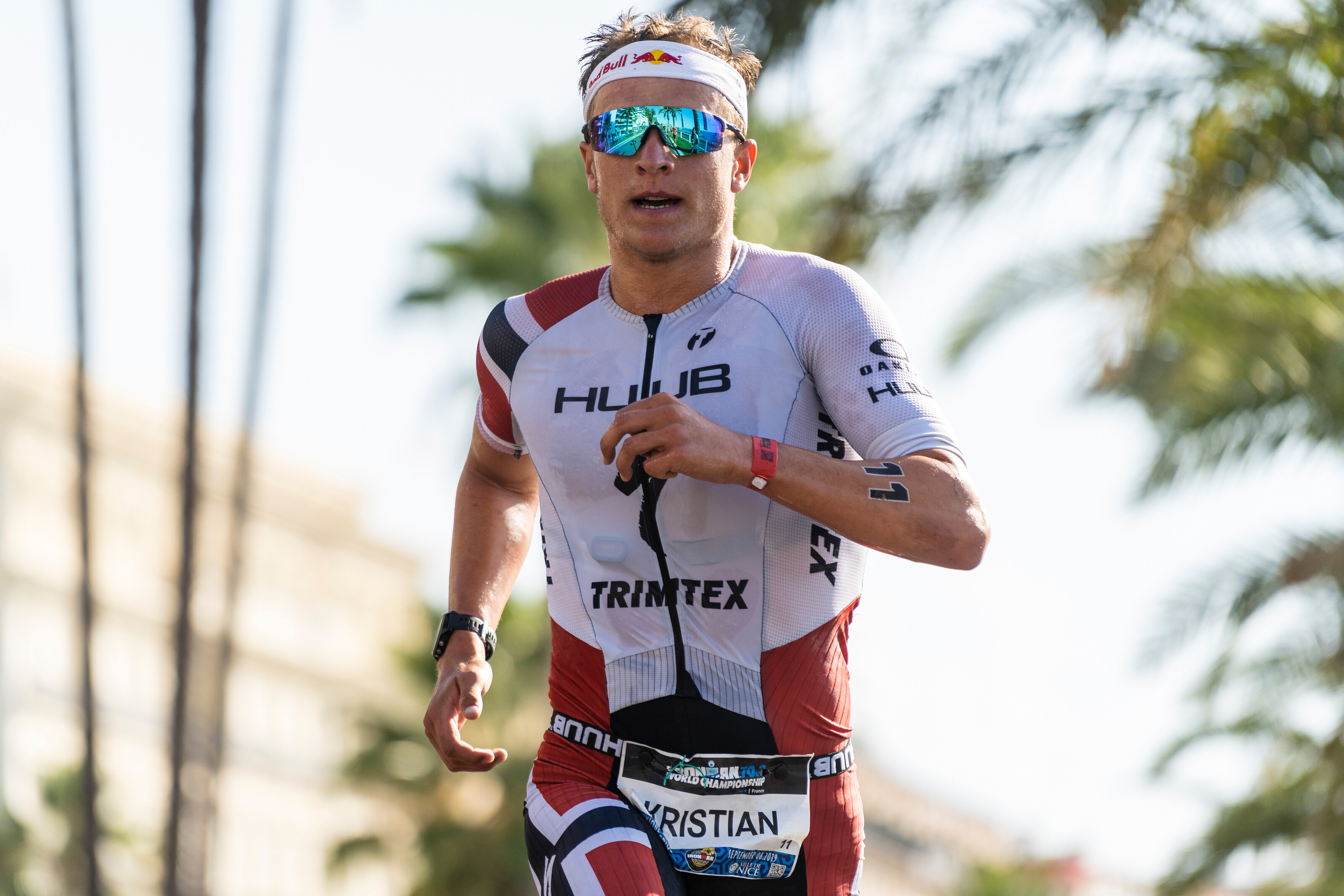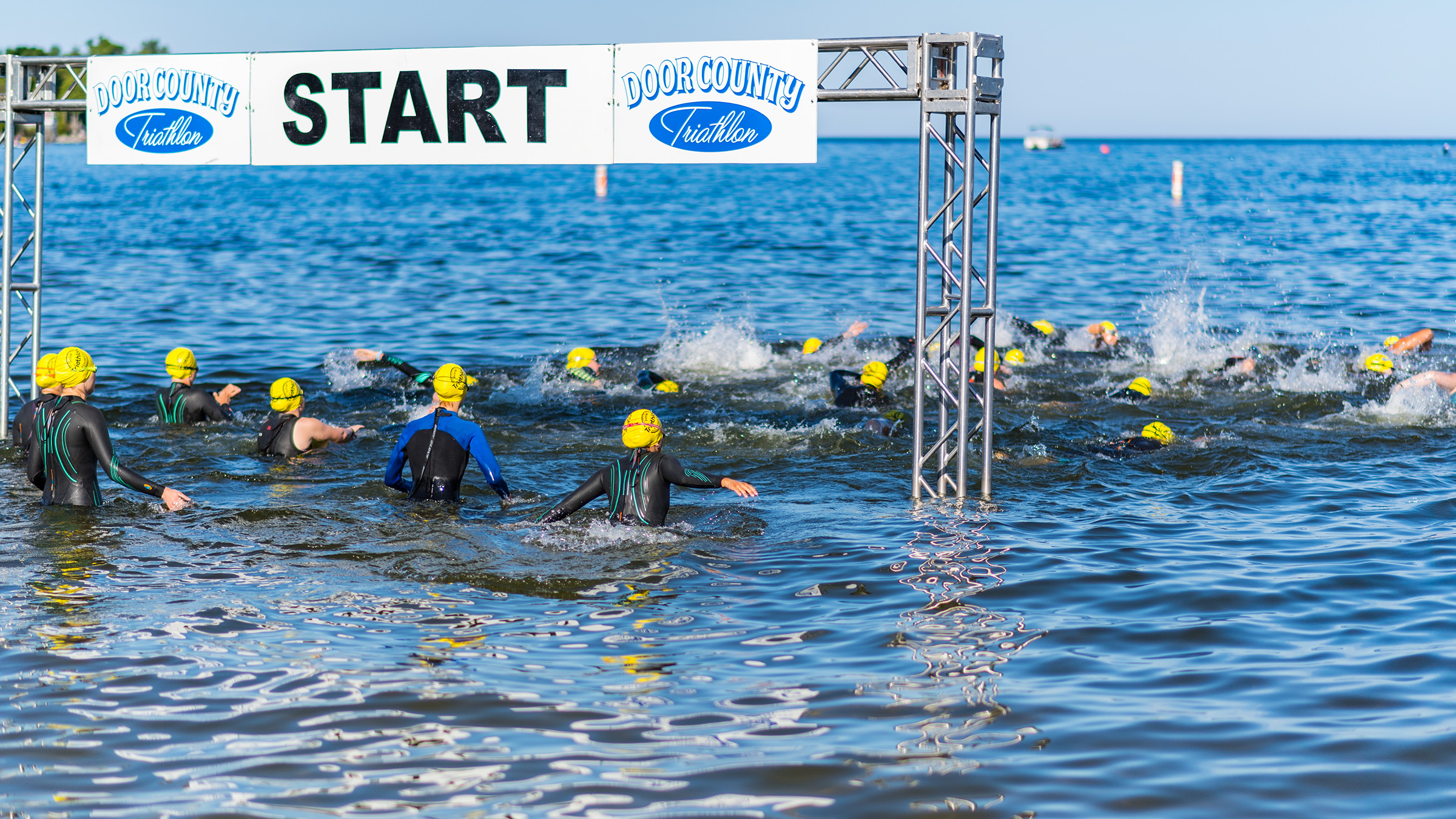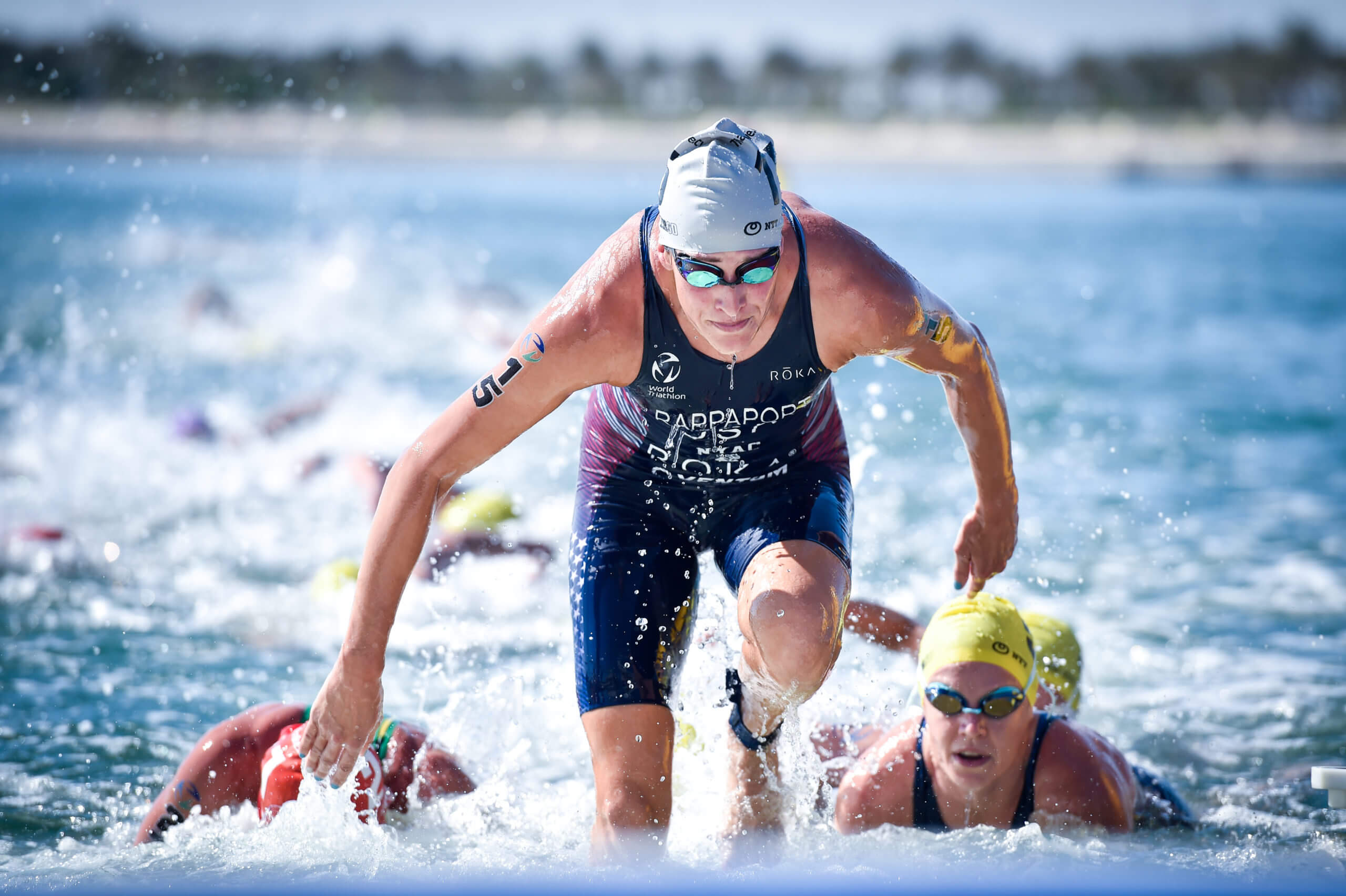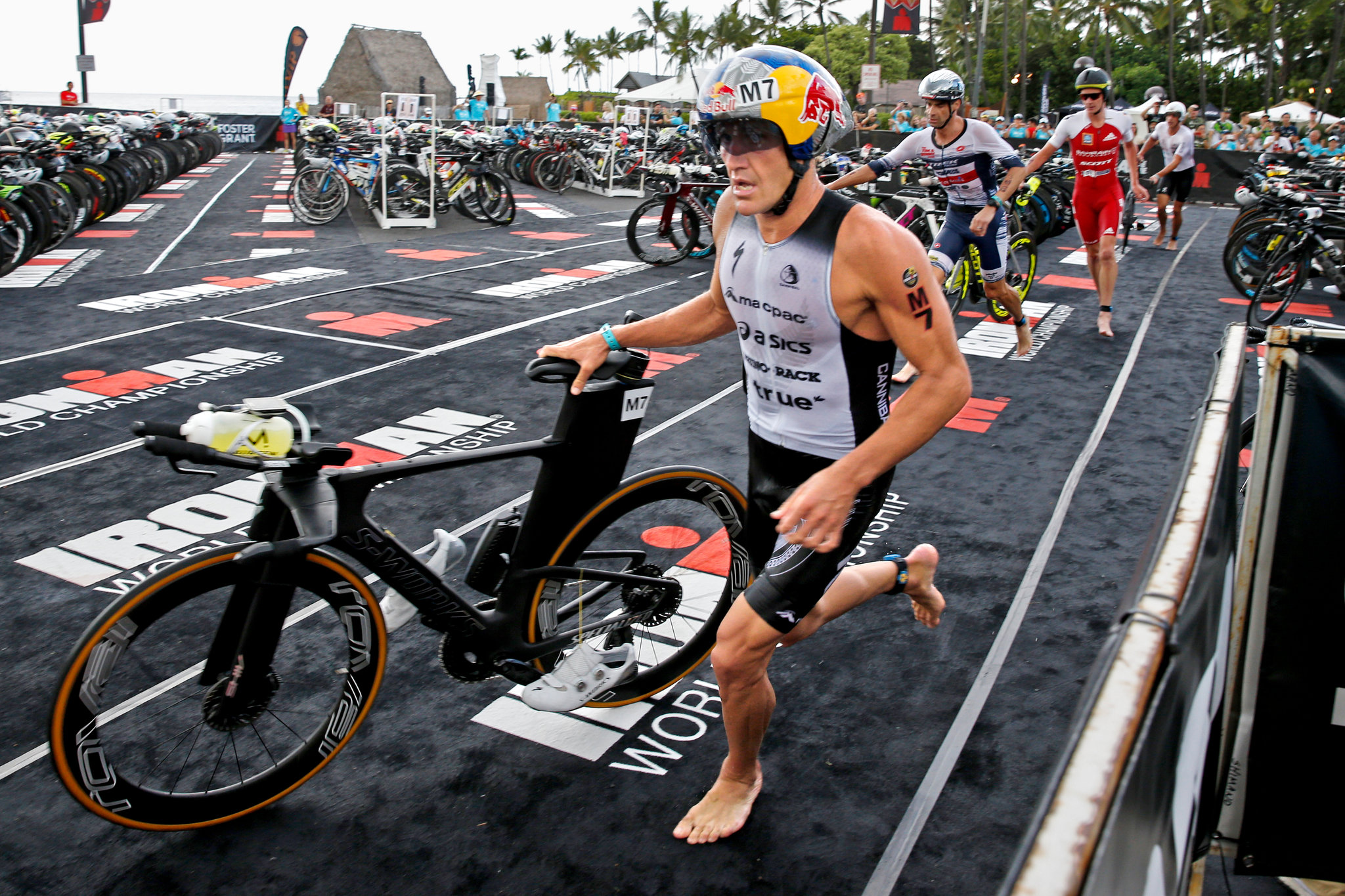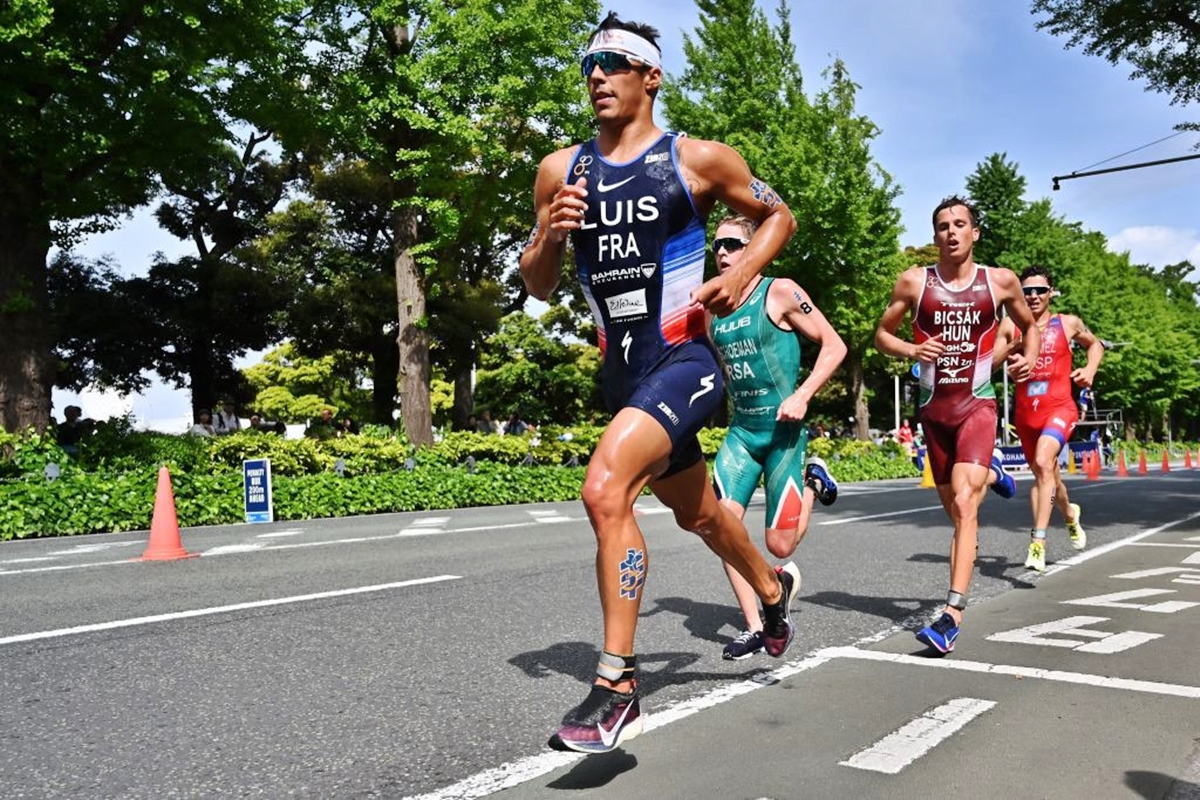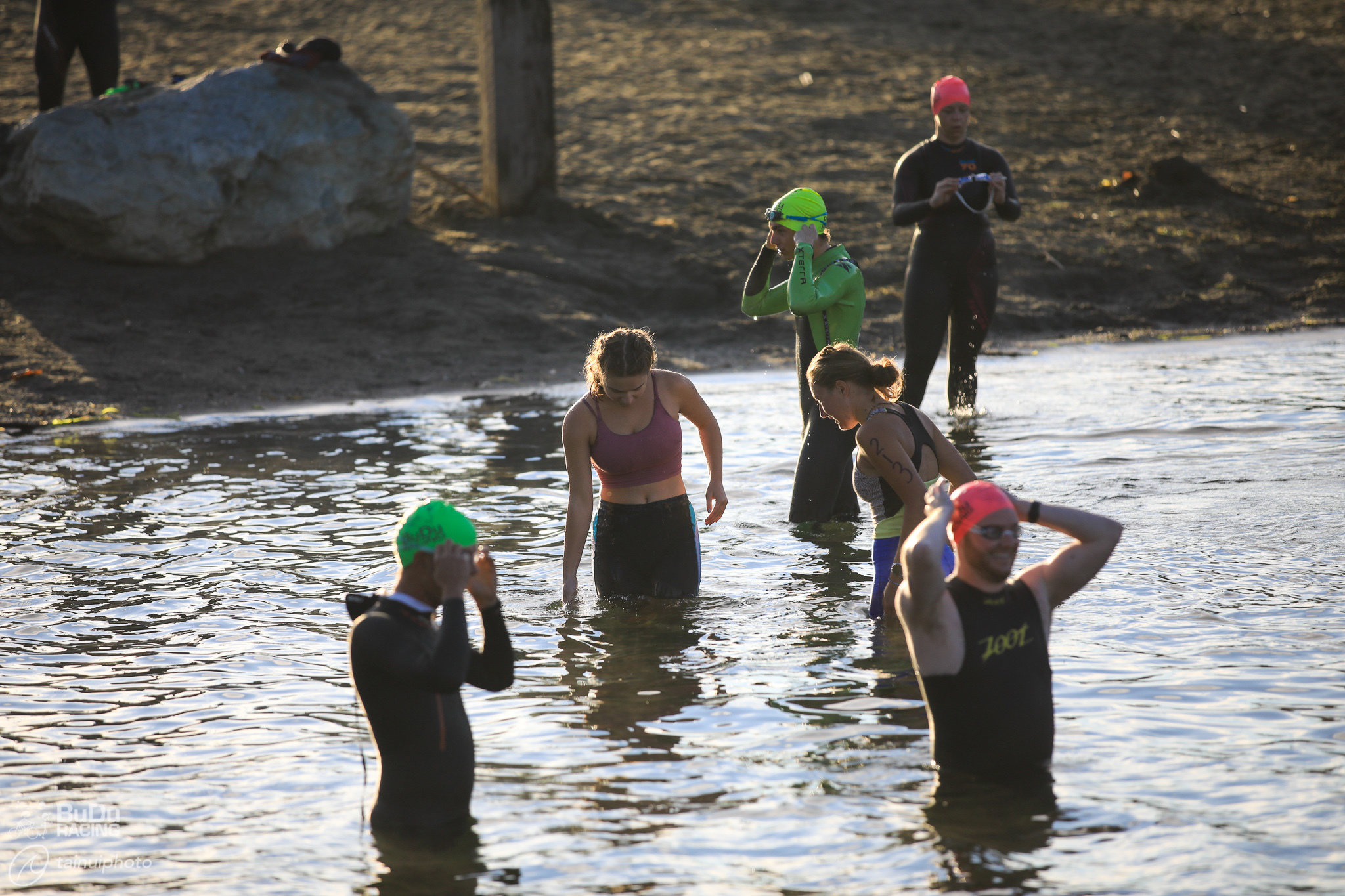

Featured
What Is Ultra Triathlon
Modified: January 2, 2024
Discover the incredible sport of ultra triathlon with our featured guide. Learn what it takes to conquer extreme distances in swimming, cycling, and running.
Introduction
Welcome to the world of ultra triathlon! If you’re passionate about pushing your limits and seeking new challenges, then ultra triathlon is the perfect sport for you. Ultra triathlon takes the already demanding sport of triathlon to a whole new level by pushing athletes to their physical and mental extremes.
Unlike traditional triathlons, which consist of a 1.5 kilometer swim, 40 kilometer bike ride, and 10 kilometer run, ultra triathlons involve much longer distances and often require participants to complete multiple stages over several days. It is a true test of endurance, willpower, and athletic ability.
These grueling events require participants to swim, bike, and run distances that are far beyond what most people consider possible. From swimming across vast oceans to cycling through treacherous terrains and running daunting marathons, ultra triathlon athletes push themselves to their limits and beyond.
Ultra triathlon events have gained popularity in recent years, as athletes from all over the world are embracing this ultimate challenge. Not only do these events attract seasoned triathletes looking to take their training to the next level, but they also entice adventure seekers and endurance sports enthusiasts keen to test their mettle.
In this article, we will explore the world of ultra triathlon, delving into its history, different event formats, training requirements, and the physical and mental challenges faced by participants. We will also discuss the benefits of participating in ultra triathlons and highlight some of the most famous events in the world.
If you’ve ever wondered what it takes to conquer an ultra triathlon, or if you’re simply curious to learn more about this fascinating sport, then read on. Get ready to dive into the world of extreme endurance, unparalleled determination, and the incredible athletes who push the boundaries of human potential in the pursuit of glory.
Definition of Ultra Triathlon
Before we dive deeper into the world of ultra triathlon, let’s first define what exactly it entails. Ultra triathlon is a variation of the traditional triathlon sport that involves longer distances and greater endurance challenges. While the standard triathlon consists of a 1.5 kilometer swim, 40 kilometer bike ride, and 10 kilometer run, ultra triathlons push these distances to the extreme.
There is no standard distance for ultra triathlons, as the distances can vary depending on the specific event and race organizer. However, ultra triathlons typically involve distances that are multiple times longer than those in traditional triathlons. These distances can range from double to even ten times the length of a standard triathlon.
Ultra triathlon events are often broken down into stages, with participants completing one stage per day or over multiple days. This allows athletes to recover and prepare for the next stage, as the total distance covered can be anywhere from 200 to over 500 kilometers.
The three main components of ultra triathlons remain the same as traditional triathlons: swimming, cycling, and running. However, the distances covered in each segment are much greater. Swims can range from several kilometers in open water such as lakes or oceans, to even crossing large bodies of water. Cycling stages can cover hundreds of kilometers, often spanning challenging terrains such as mountains or rough trails. Running distances can vary from full marathons to ultra-marathons, which can exceed the standard 42.195 kilometers.
Ultra triathlons not only test the physical capabilities of athletes but also their mental resilience. Participants must possess exceptional endurance, discipline, and the ability to push through pain and exhaustion. Completing an ultra triathlon requires months, if not years, of dedicated training and preparation.
In the following sections, we will explore the history of ultra triathlon, the different types of events, and the training and nutrition requirements needed to tackle this incredible challenge.
History of Ultra Triathlon
The origins of ultra triathlon can be traced back to the early 1980s when a group of triathletes sought to push the boundaries of the sport. Inspired by the growing popularity of long-distance running races, they set out to create a new challenge for themselves and other endurance athletes.
One of the first ultra triathlon events was the Ultraman World Championship, held in Hawaii in 1983. This grueling event consisted of a 10-kilometer swim, 421-kilometer bike ride, and an 84-kilometer run, spread out over three days. The race quickly gained recognition as one of the toughest endurance events in the world, attracting athletes from around the globe.
Following the success of the Ultraman World Championship, other ultra triathlon events began to emerge. The Deca Ironman, first held in 1998, took the concept of the Ironman triathlon and multiplied it by ten. Participants in the Deca Ironman had to complete ten times the distance of a traditional Ironman triathlon, covering a total of 38 kilometers swimming, 1,800 kilometers cycling, and 422 kilometers running.
As the popularity of ultra triathlon grew, additional events were introduced with various formats and distances. The length and difficulty of these races continued to challenge athletes and push the boundaries of human endurance. While some events kept the three-day format like Ultraman, others evolved into continuous races, where participants must complete the entire distance without breaks or stages.
In recent years, the popularity of ultra triathlons has continued to rise, with new events and variations constantly being developed. These events often take place in breathtaking locations, providing participants with stunning scenery as they push their bodies to the limit.
Ultra triathlons have evolved not only in terms of distance but also in terms of inclusivity. There are now shorter distance ultra triathlons, such as the Half Ironman and Double Ironman, that allow athletes to experience the challenges of ultra racing without committing to the extreme distances of longer events.
Today, ultra triathlon has become a global phenomenon, attracting athletes from all walks of life who are driven by a desire to test their physical and mental limits. Whether it’s the sense of accomplishment or the pursuit of personal growth, ultra triathlons offer participants a unique and life-changing experience.
In the next sections, we will delve into the different types of ultra triathlon events and the training required to compete in these extreme challenges.
Types of Ultra Triathlon Events
Ultra triathlon events come in various formats and distances, offering a range of challenges for athletes seeking an ultimate test of their endurance and determination. Let’s take a closer look at some of the different types of ultra triathlon events:
- Ultraman: The Ultraman triathlon is one of the most prestigious and iconic ultra triathlon events. It consists of a 10-kilometer swim, 421-kilometer bike ride, and an 84-kilometer run, spread out over three days. The race takes place in stunning locations and requires athletes to complete each stage within a specific time limit.
- Deca Ironman: The Deca Ironman is the ultimate challenge for endurance athletes. Participants must complete ten times the distance of a traditional Ironman triathlon, covering a total of 38 kilometers swimming, 1,800 kilometers cycling, and 422 kilometers running. This extreme event can be completed over a period of several days.
- Continuous Ultra Triathlon: Unlike multi-day events, continuous ultra triathlons require participants to complete the entire distance without breaks. These races can range from Double Ironman distances to even longer distances, spanning days of non-stop racing. The continuous format adds an extra layer of physical and mental challenge.
- Half Ironman (70.3): The Half Ironman, also known as the 70.3, is a popular distance for athletes wanting to step into the world of ultra triathlon. It involves a 1.9-kilometer swim, 90-kilometer bike ride, and a 21.1-kilometer run. While not as long as other ultra events, the Half Ironman still requires significant training and endurance.
- Double Ironman: The Double Ironman is twice the distance of a traditional Ironman triathlon. Participants swim 4.8 kilometers, cycle 360 kilometers, and run 84.4 kilometers. This demanding race usually takes place over two consecutive days, testing athletes’ physical and mental strength over an extended period.
These are just a few examples of the types of ultra triathlon events available. Each event presents its own unique challenges and attracts athletes with different goals and aspirations. Whether you’re aiming to conquer a specific distance or challenge yourself with an ultimate endurance test, there is an ultra triathlon event that will push you to your limits.
In the next sections, we will explore the training requirements and the key aspects of nutrition and hydration for ultra triathlon athletes.
Training for Ultra Triathlon
Training for an ultra triathlon requires a meticulous and well-structured approach to build the necessary endurance and prepare your body for the grueling distances and challenges ahead. Here are some key aspects to consider when training for an ultra triathlon:
- Gradual Distance Increase: It is important to gradually increase your training distances over time, allowing your body to adapt and minimize the risk of injury. Start with a solid base of swimming, cycling, and running, and gradually increase the distances week by week.
- Long-Distance Training Sessions: To prepare for the extended periods of activity required in an ultra triathlon, incorporate long-distance training sessions into your routine. This will help build endurance and mental fortitude. Plan for extended training sessions that simulate the conditions and distances of the event you are preparing for.
- Brick Workouts: Brick workouts, which involve combining two disciplines back-to-back (e.g., cycling immediately followed by running), are crucial for preparing your muscles and mind for the transition between disciplines in a triathlon. These workouts will improve your ability to perform well when fatigued.
- Strength and Conditioning: Ultra triathlons place significant demands on the body, so it’s essential to incorporate strength and conditioning exercises into your training routine. This will help prevent injuries and improve overall performance. Focus on strengthening the core, legs, and upper body to better withstand the physical stresses of the event.
- Recovery and Rest: Don’t underestimate the importance of recovery and rest days in your training plan. Your body needs time to repair and rebuild after intense training sessions. Balancing training with adequate rest is key to avoiding overtraining and maximizing performance on race day.
- Mental Preparation: Ultra triathlons are as much a mental challenge as they are a physical one. Practice mental strategies such as visualization, positive self-talk, and goal-setting to develop resilience and cope with the inevitable highs and lows during the race.
- Race Simulations: Incorporating race simulations into your training will help you familiarize yourself with the demands of the event and test your race-day strategies. Simulate race conditions by practicing transitions, fueling strategies, and pacing to fine-tune your performance.
Remember, training for an ultra triathlon is a long-term commitment. It requires consistency, dedication, and patience. A well-rounded training plan that balances endurance, strength, and mental preparation will set you up for success in tackling the extraordinary challenges of an ultra triathlon.
In the next sections, we will discuss the essential aspects of nutrition and hydration for ultra triathlon athletes, as well as the equipment and gear necessary to excel in these extreme events.
Nutrition and Hydration for Ultra Triathlon
Nutrition and hydration play a critical role in the performance and success of ultra triathlon athletes. Proper fueling and hydration strategies are essential for maintaining energy levels, preventing muscle fatigue, and avoiding dehydration. Here are some key aspects to consider when it comes to nutrition and hydration for ultra triathlon:
- Pre-Race Nutrition: Prior to the race, focus on consuming a balanced meal that includes complex carbohydrates, lean protein, and healthy fats. This will provide the necessary energy and nutrients to sustain you during the event.
- During the Race: Develop a nutrition plan that incorporates a combination of carbohydrates, electrolytes, and fluids to sustain energy levels and replenish lost nutrients. Consume easily digestible foods such as energy gels, sports drinks, bananas, and energy bars at regular intervals throughout the race.
- Hydration: Staying properly hydrated is crucial for optimal performance. Drink fluids regularly, even if you don’t feel thirsty. Utilize a mix of water and electrolyte-based beverages to replenish essential minerals lost through sweat. Monitor your urine color to ensure you’re adequately hydrated.
- Electrolyte Balance: Ultra triathlons can lead to significant electrolyte imbalances due to excessive sweating. Consume sports drinks or electrolyte tablets to maintain proper levels of sodium, potassium, and magnesium. This will help prevent muscle cramps and maintain overall performance.
- Timing and Portion Control: Consume small, frequent meals/snacks during the race rather than heavy meals. This will aid digestion and prevent stomach discomfort. Experiment with different portion sizes and timing during training to find what works best for you.
- Post-Race Recovery: After completing an ultra triathlon, prioritize recovery by replenishing your body’s nutrient stores. Consume a mix of carbohydrates and protein within the first 30 minutes of finishing the race to kickstart the recovery process. Also, hydrate adequately and consider including anti-inflammatory foods in your post-race meals.
- Individualized Approach: Every athlete is unique, and it’s crucial to find a nutrition and hydration strategy that works best for your body. Experiment with different foods, beverages, and timing during training to determine what fuels you best and helps you perform at your peak.
Remember, nutrition and hydration strategies should be practiced during your training sessions as well. Refine and fine-tune your approach leading up to the race, so you’re well-prepared for the challenges presented by the ultra triathlon event.
In the next section, we will discuss the equipment and gear necessary for competing in ultra triathlon events, ensuring you are well-equipped for the demands of these extreme challenges.
Equipment and Gear for Ultra Triathlon
When preparing for an ultra triathlon, having the right equipment and gear is essential to ensure a successful and comfortable race. Here are some key pieces of equipment and gear to consider when participating in an ultra triathlon:
- Swim Gear: A well-fitting and comfortable wetsuit is crucial for open water swims. Look for a wetsuit that provides flexibility and buoyancy. Goggles that offer a secure and watertight fit, swim cap, and earplugs are also essential.
- Cycling Gear: A reliable and well-maintained bicycle is a must for the cycling portion of the race. Ensure that it fits you properly and is suitable for long-distance riding. Invest in a comfortable saddle, cycling shoes, helmet, sunglasses, and appropriate clothing to enhance your performance and protect yourself from the elements.
- Running Gear: Comfortable and supportive running shoes that are suitable for the terrain are essential. Consider factors such as cushioning, stability, and breathability when selecting your shoes. Additionally, moisture-wicking clothing, a lightweight hat or visor, and sunglasses can enhance your running experience.
- Transition Gear: Transition bags or backpacks are useful for organizing and storing your gear during the race. These bags should be easily accessible and have separate compartments for swim, bike, and run gear. Items such as a towel, spare clothing, sunscreen, and nutrition should be readily available for quick transitions between disciplines.
- Nutrition Accessories: To keep your nutrition and hydration easily accessible during the race, consider investing in a comfortable race belt to hold energy gels or a hydration pack to carry fluids. These accessories will allow you to fuel and hydrate efficiently without interrupting your performance.
- GPS Watch or Fitness Tracker: Monitoring your performance and pacing is crucial in an ultra triathlon. A GPS watch or fitness tracker with multi-sport capabilities will enable you to track your swim, bike, and run distances, monitor your heart rate, measure your speed and pace, and provide valuable data for analyzing and improving your performance.
- First Aid Kit: It’s always wise to have a small first aid kit containing items such as band-aids, antiseptic wipes, blister patches, and pain relievers. This will come in handy in case of minor injuries or discomfort during the race.
Before your race, be sure to test and become familiar with your equipment and gear during your training sessions. Make any necessary adjustments or replacements to ensure everything is in optimal condition for the event.
Remember, while having the right equipment is important, it’s equally crucial to prioritize your comfort and safety. Understand and adhere to the race rules and regulations regarding equipment to ensure a fair and competitive race environment.
Now that you’re equipped with the knowledge of nutrition, hydration, and essential gear, you’re one step closer to conquering the challenges of an ultra triathlon.
In the [upcoming section], we will explore the unique challenges and benefits that come with participating in an ultra triathlon.
Challenges and Benefits of Ultra Triathlon
Participating in an ultra triathlon presents athletes with a myriad of challenges and demands. However, the rewards and benefits that come from conquering these challenges are equally significant. Let’s explore the challenges faced by ultra triathletes and the benefits derived from this ultimate test of endurance:
Challenges:
- Physical Strain: Ultra triathlons push athletes to their physical limits, demanding immense endurance and stamina. The long distances and continuous exertion present a significant physical challenge, pushing participants to overcome fatigue, muscle soreness, and physical discomfort.
- Mental Resilience: Endurance events of this magnitude require mental strength and resilience. Athletes must overcome doubts, mental fatigue, and moments of low morale to stay focused and motivated throughout the race. The ability to maintain mental fortitude is crucial in pushing through the highs and lows of an ultra triathlon.
- Time Commitment: Training for an ultra triathlon is a time-consuming endeavor. Balancing rigorous training schedules with other commitments can be challenging. Long hours of training, fatigue, and sacrificing leisure and social activities are all part of the dedication required to prepare for and participate in an ultra triathlon.
- Unpredictable Conditions: Ultra triathlons often take place in diverse and challenging environments. Athletes may face extreme weather conditions, difficult terrains, and logistical obstacles. Adaptability and mental agility are crucial in navigating and overcoming these unpredictable conditions.
- Recovery: After completing an ultra triathlon, the recovery process can be physically and mentally demanding. Proper rest, nutrition, and rehabilitation are essential to allow the body to heal and regain strength.
Benefits:
- Personal Achievement: Completing an ultra triathlon is a remarkable personal achievement. The intense training and dedication required to participate in an event of this magnitude instill a sense of pride, accomplishment, and self-belief.
- Physical Fitness: Training for an ultra triathlon leads to exceptional levels of physical fitness. The rigorous training regime improves cardiovascular endurance, muscular strength, and overall athleticism.
- Self-Discovery: Participating in an ultra triathlon is not just physically demanding but also a journey of self-discovery. Athletes push beyond perceived limits, uncover inner strengths, and develop a deeper understanding of their mental and physical capabilities.
- Mental Resilience: Endurance events like ultra triathlons cultivate mental resilience. The ability to overcome challenges, manage discomfort, and stay focused during grueling moments translates to other aspects of life, fostering resilience and determination in various situations.
- Community and Camaraderie: The world of ultra triathlons has a strong and supportive community. Participating in events offers the opportunity to connect with fellow athletes who understand the dedication and commitment required for such endurance challenges. The camaraderie and support from peers create a shared bond and a sense of belonging.
Surpassing the challenges of an ultra triathlon and reaping the benefits of personal growth, physical fitness, and mental resilience make this extraordinary endurance sport highly rewarding. The experience of pushing the boundaries of what seems humanly possible is an unparalleled accomplishment that stays with athletes long after the finish line is crossed.
In the next section, we will highlight some of the most famous ultra triathlon events that attract athletes from around the world.
Famous Ultra Triathlon Events
Ultra triathlons have gained worldwide recognition, and several events stand out as highly regarded and iconic in the world of endurance sports. These events attract athletes from diverse backgrounds, all striving to challenge their limits and achieve remarkable feats of athleticism. Here are some of the most famous ultra triathlon events:
- Ultraman World Championship: Held annually in Hawaii, the Ultraman World Championship is one of the most prestigious ultra triathlon events. Spanning three days, participants swim 10 kilometers, cycle 421 kilometers, and run 84 kilometers, all against the backdrop of the beautiful Hawaiian islands.
- Deca Ironman: The Deca Ironman is an exceptional ultra triathlon event that takes the traditional Ironman to an extreme level. Athletes complete ten times the distance of a standard Ironman, swimming 38 kilometers, cycling 1,800 kilometers, and running 422 kilometers. The event is held over multiple days, serving as the ultimate test of endurance.
- Enduroman Arch to Arc: This unique ultra triathlon involves an 87-mile run from London’s Marble Arch to the southern coast of England, a 33.8-mile swim across the English Channel, and concludes with a 181-mile bike ride to the Arc de Triomphe in Paris. The combination of endurance disciplines and the iconic course make this event highly regarded among ultra triathletes.
- Isklar Norseman Xtreme Triathlon: Known as one of the toughest triathlons in the world, the Norseman takes place in Norway and presents participants with a challenging course. Apart from the standard triathlon distances, the race includes a demanding climb up a mountain, making it a unique and grueling experience for athletes.
- Swissman Xtreme Triathlon: Set against the breathtaking backdrop of the Swiss Alps, the Swissman Xtreme Triathlon showcases the stunning beauty of Switzerland. Athletes embark on a 3.8-kilometer swim in Lake Maggiore, a 180-kilometer bike ride through the alpine landscape, and a marathon run that includes a climb up the iconic mountain, Kleine Scheidegg.
- Double Brutal Extreme Triathlon: Held in Wales, the Double Brutal is a challenging and demanding event that pushes participants to their limits. Athletes must complete a 7.6-kilometer swim, a 360-kilometer bike ride, and a double marathon run of 84.4 kilometers. The rugged terrain and unpredictable weather make this ultra triathlon a true test of endurance.
These ultra triathlon events are known for their demanding courses, stunning locations, and the incredible endurance required to conquer them. They attract athletes from around the globe who are drawn to the exceptional challenges and the opportunity to push their limits to the extreme.
Participating in any of these famous ultra triathlon events is a testament to an athlete’s dedication, resilience, and commitment to pushing beyond their boundaries. The recognition and sense of accomplishment earned from completing these events solidify them as significant milestones in the ultra triathlon community.
As the popularity of ultra triathlons continues to grow, new events are continually being introduced, offering athletes even more opportunities to showcase their endurance and determination.
In [the next section], we will conclude our exploration of ultra triathlon by summarizing the key points discussed in this article and highlighting the enduring allure of this challenging yet rewarding sport.
Conclusion
The world of ultra triathlon is a captivating realm where endurance athletes push their limits and redefine what is possible. From the physically demanding distances and the mental fortitude required to conquer them, to the challenges faced during training and the rewards reaped upon completion, ultra triathlon offers a unique and life-changing experience.
In this article, we have explored the definition and history of ultra triathlon, delved into the different types of events available, and discussed the training, nutrition, and equipment required for success. We have also highlighted the challenges faced by ultra triathletes, as well as the benefits derived from participating in these extraordinary endurance events.
Ultra triathlon athletes endure physical strain, mental fatigue, and unpredictable conditions throughout their journey. The dedication to training, sacrificing leisure time, and the ability to push through physical and mental barriers are all part of the profound challenges faced on this extraordinary path.
However, the rewards of participating in ultra triathlon are immeasurable. These events serve as a platform for personal achievement, fostering physical fitness, mental resilience, and self-discovery. Athletes become part of a supportive and passionate community, where camaraderie and a lifetime of memories are forged.
The allure of ultra triathlon lies in its ability to transform individuals and tap into their deepest reserves of strength and determination. Each race becomes a unique journey, a pursuit of personal growth, and a validation of the human spirit.
Whether you’re an experienced triathlete looking for a new challenge or an adventure seeker craving to test your limits, ultra triathlon offers an incomparable opportunity to push beyond your boundaries and embrace the extraordinary.
So, lace up your running shoes, hop on your bike, and dive into the water. The world of ultra triathlon awaits, ready to test your endurance, unleash your potential, and embark on a transformative journey you will never forget.


